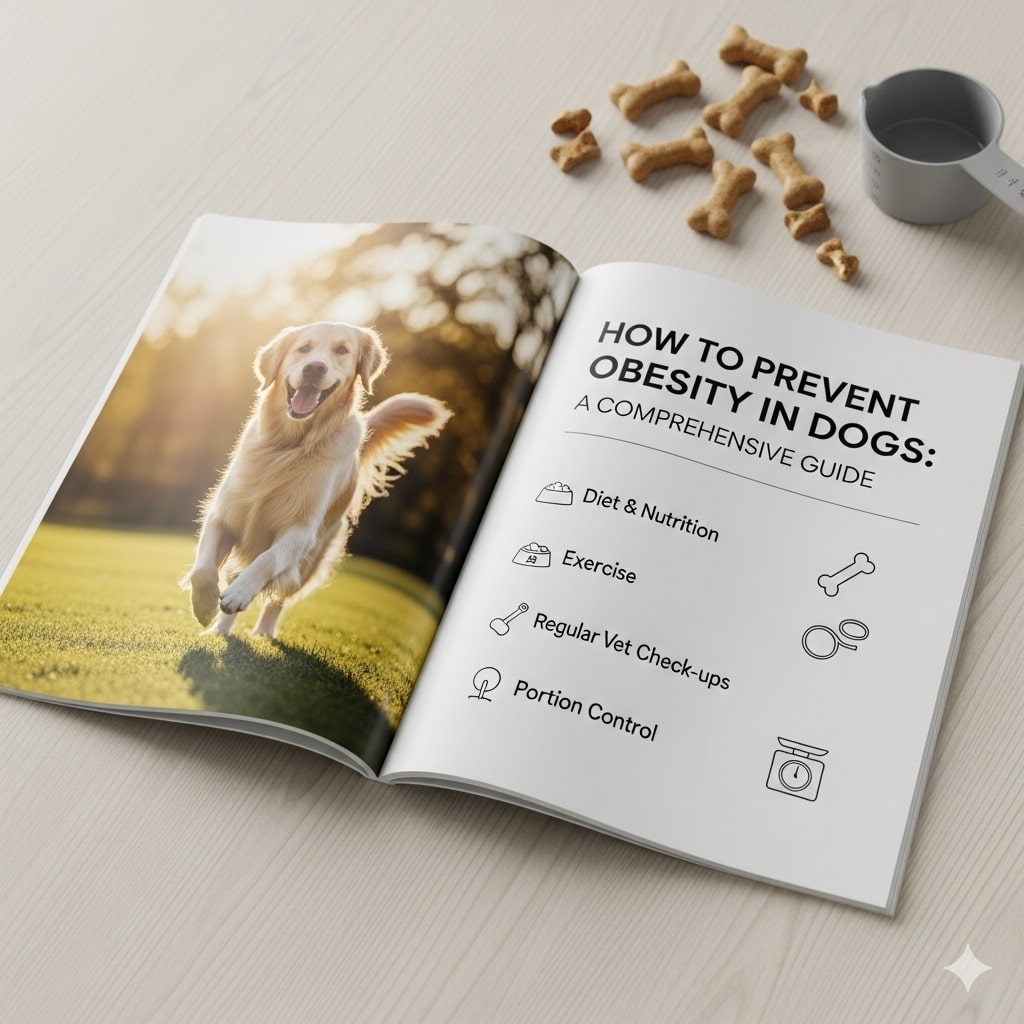“Prevent Obesity and Effective Strategies to Keep Your Dog Healthy and Fit”
Obesity in dogs is a growing concern, mirroring human trends and carrying significant health risks. This comprehensive guide provides dog owners with practical strategies and insights to prevent obesity, ensuring a happier, healthier, and longer life for their beloved companions. We’ll cover everything from understanding the causes of canine obesity to implementing effective diet and exercise plans.
Understanding Canine Obesity
Obesity isn’t just about aesthetics; it’s a serious medical condition that can significantly impact a dog’s quality of life. Overweight dogs are at a higher risk of developing a range of health problems, including:
- Diabetes: Excess weight can lead to insulin resistance.
- Arthritis: Extra pounds put stress on joints, accelerating wear and tear.
- Heart Disease: Obesity can strain the cardiovascular system.
- Respiratory Problems: Excess fat can restrict breathing.
- Reduced Lifespan: Studies show that obese dogs tend to live shorter lives.
Discover More: Puppy Potty Training Tips: Complete Guide for New Owners

Identifying Risk Factors
Several factors can contribute to a dog’s likelihood of becoming obese:
- Breed: Certain breeds, such as Labrador Retrievers, Beagles, and Dachshunds, are predisposed to weight gain.
- Age: Older dogs are generally less active and have slower metabolisms.
- Neutering/Spaying: These procedures can sometimes slow down metabolism.
- Diet: High-calorie diets and excessive treats are major contributors.
- Lack of Exercise: Insufficient physical activity leads to calorie surplus.
- Underlying Medical Conditions: In rare cases, hormonal imbalances like hypothyroidism can cause weight gain.
Discover More: Affordable Dog Grooming Tips for Busy US Pet Owners
The Cornerstone of Prevention: Diet
A well-balanced diet is crucial for preventing obesity. Here’s how to manage your dog’s food intake:
Choosing the Right Food
- Read Labels Carefully: Pay attention to calorie content, ingredients, and recommended serving sizes.
- Opt for High-Quality Food: Look for dog foods with real meat as the primary ingredient and avoid those with excessive fillers.
- Consider Breed-Specific Formulas: Some brands offer formulas tailored to the specific needs of different breeds.
- Consult Your Veterinarian: Your vet can recommend the best food based on your dog’s age, breed, activity level, and health status.
Portion Control
- Measure Food Accurately: Use a measuring cup to ensure you’re feeding the correct amount.
- Follow Feeding Guidelines: Start with the recommended serving size on the food label, but adjust as needed based on your dog’s weight and body condition.
- Divide Meals: Feeding your dog two or three smaller meals throughout the day can help regulate their metabolism and prevent overeating.
Treat Management
- Limit Treats: Treats should only make up a small percentage (no more than 10%) of your dog’s daily calorie intake.
- Choose Healthy Treats: Opt for low-calorie options like baby carrots, apple slices, or commercially available healthy dog treats.
- Use Treats Strategically: Use treats for training and rewarding good behavior, not just out of boredom or guilt.
- Avoid Table Scraps: Human food is often high in calories and fat and can be harmful to dogs.
Learn more: Best Dog Grooming Tips for Busy Pet Owners in the USA
The Importance of Exercise
Regular physical activity is essential for burning calories and maintaining a healthy weight.
Types of Exercise
- Walking: Daily walks are a great way to get your dog moving. Aim for at least 30 minutes of walking per day, broken up into shorter sessions if needed.
- Running: If your dog is energetic and healthy, running can be a great way to burn calories.
- Playing Fetch: Fetch is a fun and engaging activity that provides a good workout.
- Swimming: Swimming is a low-impact exercise that’s gentle on the joints.
- Agility Training: Agility courses provide a challenging and stimulating workout.
- Interactive Games: Puzzle toys and other interactive games can help keep your dog mentally and physically stimulated.
Tailoring Exercise to Your Dog
- Consider Breed and Age: Adjust the intensity and duration of exercise based on your dog’s breed, age, and health condition.
- Start Slowly: Gradually increase the amount of exercise to avoid injury.
- Monitor Your Dog’s Condition: Watch for signs of fatigue, overheating, or pain.
- Make it Fun: Choose activities that your dog enjoys to keep them motivated.
Monitoring Your Dog’s Weight and Body Condition
Regularly monitoring your dog’s weight and body condition is crucial for identifying potential problems early on.
Weighing Your Dog
- Use a Scale: Weigh your dog regularly, ideally once a month.
- Keep a Record: Track your dog’s weight over time to identify any trends.
Body Condition Scoring
- Learn How to Assess: Familiarize yourself with the body condition scoring system, which assesses a dog’s fat covering and muscle mass.
- Consult Your Veterinarian: Your vet can teach you how to properly assess your dog’s body condition.
Seeking Professional Guidance
Your veterinarian is your best resource for preventing and managing obesity in your dog.
Regular Checkups
- Annual Exams: Schedule regular checkups to monitor your dog’s overall health and weight.
- Discuss Concerns: Talk to your vet about any concerns you have about your dog’s weight or diet.
Personalized Recommendations
- Dietary Advice: Your vet can recommend the best food and feeding plan for your dog.
- Exercise Plan: Your vet can help you develop a safe and effective exercise plan.
- Underlying Conditions: Your vet can rule out any underlying medical conditions that may be contributing to weight gain.
Conclusion
Preventing obesity in dogs requires a proactive and comprehensive approach that includes a well-balanced diet, regular exercise, and close monitoring of weight and body condition. By following the guidelines outlined in this article and working closely with your veterinarian, you can help your dog maintain a healthy weight and enjoy a long, happy, and active life. Remember, a healthy dog is a happy dog!
⚠️ NOTE: This post is for informational purposes only. Please see our full Disclaimer Page for details.
